‘Zero Dark Thirty’: Kathryn Bigelow Shows Us the Things We Carried
When "Zero Dark Thirty" opens nationally Friday, many moviegoers will already have made up their minds.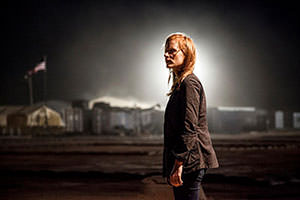
When “Zero Dark Thirty” opens nationally Friday, many moviegoers will already have made up their minds. It’s hard to remember a film, or a director, inspiring so much vitriol: histrionic self-righteousness on the left with author Naomi Wolf comparing director Kathryn Bigelow to German propaganda filmmaker Leni Riefenstahl, and accusations by the right that “Zero Dark Thirty” portrays the acting director of the CIA as a patsy. Even novelist Bret Easton Ellis got into the act, tweeting: “Kathryn Bigelow would be considered a mildly interesting filmmaker if she was a man but since she’s a very hot woman she’s really overrated.” Ellis apologized, saying he was drunk and hadn’t actually seen the film, an admission that at least had the virtue of being amusing, and no more mindless than most of the furor.
|
Related: Read Truthdig’s review of “Zero Dark Thirty” by Richard Schickel. |
A film about events this recent and emotionally charged cannot escape debate, but the most controversial scenes in “Zero Dark Thirty” have been misrepresented, and the fury directed at Bigelow is both jarring and familiar. Call it Hillary Clinton syndrome and you might be right. Now that Hillary is a meme with dark glasses, BlackBerry and (finally!) a commitment to hair length, Bigelow is this decade’s gender offender. For years, Bigelow has refused to answer questions about being a “woman” director, quietly going about her business of making odd, interesting, violent films. Now that she is successful, she is being put in her place.
But Bigelow’s sins go beyond offending America’s version of the Taliban. The reaction to “Zero Dark Thirty” is reminiscent of a child’s tantrum when a parent forgets part of an often-repeated story. Bigelow’s real transgression is refusing to employ the familiar language of American cinema. Even Oliver Stone’s antiheroes provide a tragic but ultimately triumphalist narrative. What Bigelow does is something else entirely.
In factual terms, “Zero Dark Thirty” tells the story of what Andrew O’Hehir of Salon calls “the secret history of spycraft” that led from Sept. 11, 2001, to the Osama bin Laden raid on May 1, 2011. The film opens with a black screen and audiotapes from 9/11. A less ambitious filmmaker might have started with the overly familiar footage of the twin towers falling. Bigelow’s elegant, straight-outta-art-school move sets the mood of well-crafted understatement that will turn out to be endemic both to the film’s structure and its message.
After this preface, the action starts at full throttle. Maya, a fresh recruit to the CIA, is attending a torture session in a “black” prison. As many reviewers have pointed out, we get no backstory on Maya, who is played by Jessica Chastain. She doesn’t seem to have a life, or if she does, she isn’t going to tell us about it. (Much like Bigelow herself, who reportedly just ended a 10-year relationship with Mark Boal, the ex-journo who wrote both “The Hurt Locker” and “Zero Dark Thirty,” but never confirmed that they were a couple.)
The present tense, so shallow in literature, turns out to be remarkably effective in “Zero Dark Thirty.” Maya winces at the torture of an Arab detainee named Ammar (Reda Kateb), subtly but definitively establishing her character. Noticeable to the audience but slight enough for Ammar to miss, Chastain’s gesture tells us that despite her novice status, Maya can tamp down her feelings to get the job done. It’s not something that effort alone could accomplish. It’s her nature.
What makes Maya’s self-control more impressive is that the torture scenes are so hard to watch. (Both Chastain and Bigelow told interviewers they were difficult to film.) Ammar is beaten, waterboarded (sans board), sexually abused, subjected to deafening heavy metal, and locked in a cabinet. It’s not hard to believe the interrogator, Dan (Jason Clarke), when he tells Ammar that everyone breaks eventually. “It’s biology,” he says.
Is this posturing or truth? Like many aspects of torture in the film, there’s no clear answer. Despite Dan’s words, Ammar, a midlevel al-Qaida bagman, does not confess under torture. He talks to Dan and Maya only after Maya suggests they relax the pressure, and deceive him about the success of a terrorist attack. They let Ammar outside, feed him and chat casually at a picnic table.
The film is also not entirely clear about the value of the information Ammar gives them. With so much ambiguity, it’s difficult to understand how anyone could view the film as a ringing endorsement of torture. The ambiguity itself was objectionable to Jane Mayer, a reporter for The New Yorker, who compared “Zero Dark Thirty” unfavorably to Steven Spielberg’s “Lincoln.” Mayer called Bigelow’s film “devoid” of moral context, in part because, in her words, Boal and Bigelow were guilty of “excising” the country’s moral debate over torture. In fact, the opposite is true. The film barreled straight into the most potentially explosive subject in its opening scenes.
Torture is a fact of life, and, often, of war. More to the point, torture is a fact of life in America’s war on terror; it played a central role in intelligence gathering by the United States for the better part of a decade and instigated a profound questioning of our national identity. In terms of both verisimilitude and dramatic structure, Bigelow and Boal made the inevitable choice to include depictions of torture in the film. It is to the filmmakers’ credit that they have been condemned by groups of people who vehemently disagree with each other. If torture had simply “worked,” the film would have been exactly the kind of ooh-rah jingoistic propaganda that Bigelow’s harshest critics have in mind. If it hadn’t, it would have been a finger-wagging morality tale. The title borrows from military jargon — Zero Dark Thirty is shorthand for half past midnight. But it’s hard not to think that the clock in question marks the winding down of the American empire, or at the very least, tells us that we have passed the halfway point.
As they did in the film’s haunting opening, Boal and Bigelow eschewed cliché when dealing with torture, mercifully sparing us the deadly dull scene of generals seated around a long table as the president intones: “Gentlemen, what would you have me do?” With no easy answers, the audience must confront the same ugly decisions as the interrogators, and the country.Media gadfly Michael Wolff has called Bigelow a sadist and a fetishist because of the violence in her films. In “Strange Days,” Bigelow’s 1995 cyberpunk movie written by ex-husband James Cameron, there are scenes that almost could have been lifted from porno, and the action turns on a horrifying snuff film sequence. But Bigelow’s response is telling: “I don’t like violence. I am, however, very interested in the truth. And violence is a fact of our lives, a part of the social context in which we live. Do I wish [torture] was not part of that history? Yes, but it was.”
War is dirty. It is immoral, or at the very least amoral, and leaves soldiers traumatized and ashamed. Feelings are blunted in combat, and grief can take decades to surface. Even then, many veterans say they have never recovered.
The crux of “Zero Dark Thirty” is this “long winter retreat of emotion” as war correspondent Anthony Loyd called it. That message is driven home when Maya’s CIA colleague Jessica (Jennifer Ehle), who has urged her to loosen up, pays a price for reacting too enthusiastically to what appears to be a break in the case. By that time, we no longer expect Maya to rend her garments and weep; the strength of Chastain’s performance is that we know how she feels. Chastain’s stillness allows us to ruminate on her unusual beauty, a visual correlative for the film’s narrative arc. Her red hair is both a banner and a wound, her pale skin the marble of a breathing statue. She is our American Marianne, ensuring the Triumph of the Republic.
“Zero Dark Thirty” is more akin to “Antigone” than a modernist screed: a drama that deals in archetype, and with careful accretion of detail, leaves a space for the viewer to experience the post-9/11 war with pity and terror as if it happened to them. The fact that we have been in a state of war for more than a decade has been muffled by our reliance on a volunteer army and unmanned drones. Bigelow is certainly aware of this. In a piece by war correspondent Dexter Filkins that ran in The New Yorker, she cracked wise about the short film that got her into film school at Columbia, which focused on a fight between two guys in an alley, each with a political agenda. She told Filkins that she “was very inspired by semiotics,” the French deconstruction theory dominant at the time.
“When you watch violence, you’re being deconstructed in a Lacanian sense,” she said. “You’re responding to an experiential situation in the safety of the theater.”
This was no offhand remark. Bigelow has always been interested in the relationship between the viewer and the text. (In “Strange Days,” she explores permutations of this relationship in the form of an addictive Superconducting Quantum Interference Device, called a SQUID, that lets people viscerally experience someone else’s rush, which usually includes sex, crime or violence.)
If you want to understand “Zero Dark Thirty,” it helps to know that in the 1970s, Bigelow was studying painting on a scholarship sponsored by New York’s Whitney Museum. She lived downtown in an old bank vault beneath an off-track betting parlor run by New York state. She was part of a conceptual art collective. Bigelow and composer Philip Glass, who was driving a cab at the time, used to renovate downtown lofts. The 5’11” Bigelow sanded the old factory floors and Glass did the plumbing. After the lofts were habitable, they would make a profit by charging the tenants a “fixture fee,” a one-time payment for the rehab of the industrial space.
The lofts are not so important. What is important is Bigelow’s grounding in semiotics and deconstruction, the French intellectual theory that caused so many of us to bail out of graduate school in the ’70s and ’80s. Semiotics was based on the idea that meaning is not transmitted; rather, we create it according to a complex interplay of codes and conventions. Some semioticians make a distinction between structure and message; most seem to concentrate on structure. (If that sounds arcane, consider film historian Paddy Whannel’s description of the field: “Semiotics tells us things we already know in a language we will never understand.”)
Watching one of Bigelow’s films is not unlike listening to a Glass composition. Structures and rhythms have the pull of an undertow. That’s not to say that “Zero Dark Thirty” is abstract. The final action sequences roared. The Navy SEALs were sweet and macho, and the incursion to the Abbottabad, Pakistan, compound stunningly filmed with night vision goggles, underscoring the film’s realism.
Despite her gift for action, understatement seems to be Bigelow’s natural register, as hardwired to her sensibility as it is to Maya’s. As stunning as the bin Laden scenes are, it is Maya’s reaction to the end of the hunt that transfixes us. No spoiler alert, other than to say that the ending of “Zero Dark Thirty” is equal parts Chekhov and Chris Hedges, the Truthdig columnist and former New York Times war correspondent who wrote: “The enduring attraction of war is this: Even with its destruction and carnage it can give us what we long for in life. It can give us purpose, meaning, a reason for living.” Bigelow, who worked on “Zero Dark Thirty” as obsessively as Maya worked on finding bin Laden, is smart enough to know that Hedges’ insight applies equally to jihadis and Maya; if humanity has a dark commonality, war brings it to the surface.
O’Hehir wrote that what “Zero Dark Thirty” has to say about torture and many other things is not entirely clear, and what you see in it depends on what you bring with you. But I can’t escape the feeling that it is a supremely moral film. And despite the spectacular action sequence that culminates in bin Laden’s death, I believe it is a film that only a woman would have made. As women do, it forces us to take emotional responsibility. Emotional responsibility is not the same as moral or ethical responsibility: We did not, after all, bomb the World Trade Center or declare holy war. We did not, if I may be forgiven the crudeness, cut off the head of Daniel Pearl, a reporter who may have wanted to get his story, but who also wanted to do good in the world. But we suffered losses, and we matched our enemy’s brutality. Some of us get out alive, but nobody gets out clean.
Bigelow doesn’t endorse or condemn torture. What she has done with “Zero Dark Thirty” is far more difficult than anything Stone ever attempted: She created a work of art that reproduces the experience of war, cuts no corners on moral ambiguities, and, if America is ready for it, will force us to finally confront our grief over 9/11 and its aftermath.
Kathryn Bigelow doesn’t need a Superconducting Quantum Interference Device. It is Bigelow’s art that lets you become Maya, the new CIA agent who finds herself in a dank cell watching something unbearable. Yet she stays. So do we. So did we.
Your support matters…Independent journalism is under threat and overshadowed by heavily funded mainstream media.
You can help level the playing field. Become a member.
Your tax-deductible contribution keeps us digging beneath the headlines to give you thought-provoking, investigative reporting and analysis that unearths what's really happening- without compromise.
Give today to support our courageous, independent journalists.
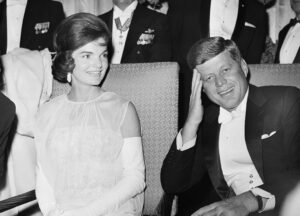
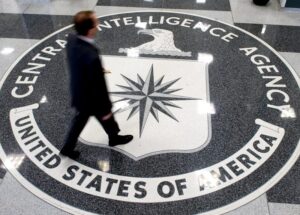
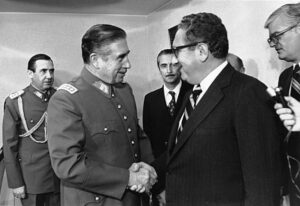
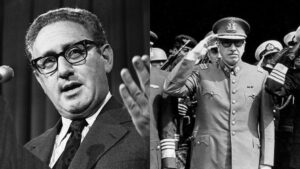


You need to be a supporter to comment.
There are currently no responses to this article.
Be the first to respond.